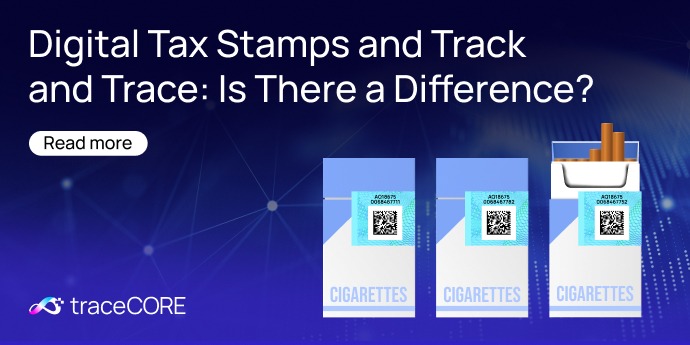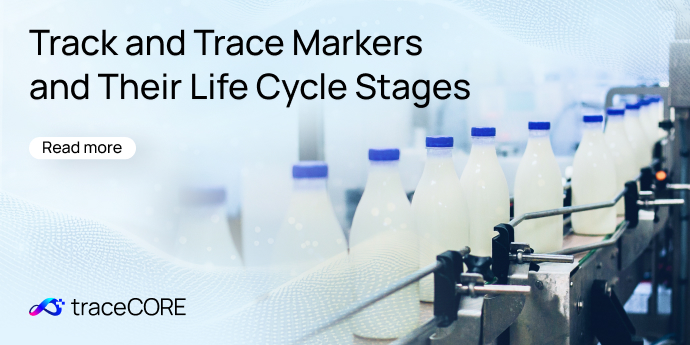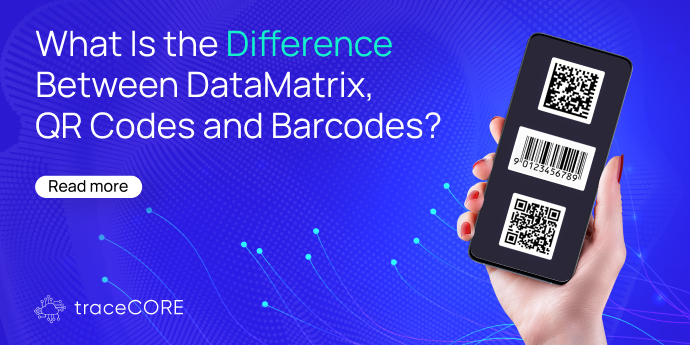However, the real magic happens when the DataMatrix code integrates with a Digital Track and Trace system: the product’s journey — from production to distribution to retail — is recorded.
What Is Digital Track and Trace?
Digital Track and Trace is a system that allows all supply chain participants — manufacturers, importers, distributors, and retailers — to monitor, record, and verify the movement of products throughout the entire supply chain from production to the end consumer.
Each scan at different points updates the product’s “digital history.” In case a product shows up in an unexpected location or time, the system flags it as suspicious or counterfeit.
This creates end-to-end transparency, making it nearly impossible for counterfeit goods to enter the legitimate supply chain undetected.

Digital Track and Trace is often confused with Digital Tax Stamps, which makes people use these two terms interchangeably. However, there is a difference, and we talked about it extensively in our “Digital Tax Stamps and Track and Trace: Is There a Difference?” post, so make sure to check it out.
What Else Makes DataMatrix Codes Vital for Businesses?
Unlike simple printed text or 1D barcodes, DataMatrix codes are compact, hard to replicate, and can include encrypted or encoded data. Advanced systems can even use cryptographic signatures — digital seals that verify the authenticity of the data itself.
Moreover, any alteration to the code (e.g., reprinting, tampering, or cloning) makes it invalid when scanned.
Consumers are also not powerless when it comes to spotting fake goods. Nowadays, they can scan DataMatrix codes using their smartphones. The scan connects to a secure database and confirms whether the product is authentic.





.png)
.png)


